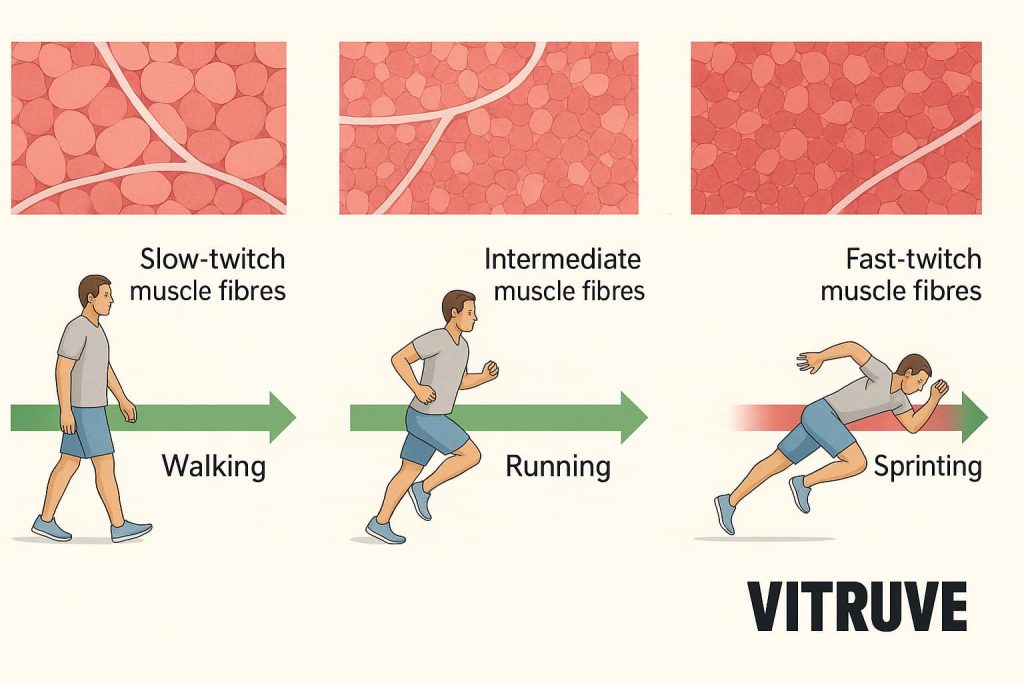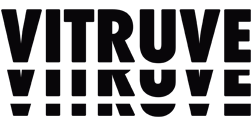18 de September de 2025
Training Fast Twitch vs Slow Twitch: What Coaches Need to Know
In elite sports, not all muscle fibers work the same way. Some are built for endurance, others for explosive power. Knowing how to design training for fast twitch vs slow twitch fibers can make the difference between a program that produces average results and one that unlocks an athlete’s true potential.
Understanding the physiology of each fiber type and how they adapt to specific training stimuli is critical for strength and conditioning coaches at the NCAA, NFL, MLS, and other high-performance levels.

Slow twitch muscle fibers (Type I)
Slow twitch fibers, also known as type I fibers, are the foundation of endurance and long-duration performance. They contract slowly compared to fast-twitch fibers but are highly resistant to fatigue, relying primarily on aerobic metabolism to generate energy. These fibers are sometimes called “red fibers” because of their high myoglobin content, which gives them a darker appearance and enhances their ability to transport oxygen.
Characteristics
- High mitochondrial density and capillarization: Type I fibers are rich in mitochondria and blood supply, enabling efficient oxygen delivery and energy production through oxidative pathways.
- Efficient oxygen utilization: They excel at using oxygen to break down carbohydrates and fats for sustained energy.
- Low force production but sustained contractions: They cannot produce the explosive force of type II fibers, but they can contract repeatedly for long periods without decline in performance.
- Greatly resistant to fatigue: This makes them critical for activities requiring consistent effort, stability, and posture control over time.
Best trained with
- Long-duration, low-to-moderate intensity efforts: Endurance runs, cycling, or swimming sessions where the goal is energy efficiency.
- Aerobic conditioning and steady-state endurance: Training that strengthens the cardiovascular system and enhances oxygen transport.
- Submaximal strength training with high volume: Repetitions in higher ranges (12–20+) at moderate loads to improve local muscular endurance.
- Extensive plyometrics like skipping drills, jump rope, or ankle hops to reinforce rhythm, tendon stiffness, and energy economy without high force demands.
Sports application
- Endurance sports: Type I fibers dominate in marathon running, triathlon, rowing, and cycling, where sustained effort is the priority.
- Team sports: In soccer or basketball, athletes need type I efficiency to maintain movement intensity over 90+ minutes without excessive energy loss.
- Support role in power sports: Even in explosive sports like football or weightlifting, type I fibers help athletes recover between maximal efforts and tolerate higher training volumes.
By targeting type I fibers with the right training methods, coaches can enhance an athlete’s aerobic base, improve recovery between high-intensity efforts, and ensure consistent performance during prolonged competition.
Fast twitch muscle fibers (Type II)
Fast twitch fibers, or type II fibers, are responsible for speed, strength, and explosive performance. Unlike slow-twitch fibers, they contract rapidly and generate high force, but they fatigue much more quickly. These fibers rely heavily on anaerobic energy systems, which provide immediate energy but are not sustainable for long durations.
There are two main subtypes with distinct characteristics and training implications:
- Type IIa (fast oxidative): Often called “hybrid fibers,” these combine endurance capacity with explosive potential. They can adapt toward endurance or power depending on training stimuli.
- Type IIx (fast glycolytic): The most powerful fibers, specialized for pure speed and maximal force. They fatigue rapidly but deliver peak outputs critical for short, explosive actions.
Characteristics
- High force and contraction speed: Type II fibers can produce significantly more power per contraction compared to type I. This makes them indispensable for peak performance in short bursts.
- Rely primarily on anaerobic glycolysis: They use stored energy (ATP and creatine phosphate) and anaerobic breakdown of glycogen, enabling rapid energy release without oxygen.
- Lower fatigue resistance: Type IIa fibers have moderate endurance, while IIx fibers fatigue in seconds due to high metabolic cost.
- Critical for explosive actions: Sprinting, heavy lifts, tackles, and jumps all rely heavily on type II fiber recruitment.
Best trained with
- Heavy resistance training and low-rep maximal lifts: Exercises like squats, deadlifts, and presses at high intensity (85–100% 1RM) stimulate fast-twitch recruitment.
- Sprinting, bounding, and loaded jumps: Short, explosive actions reinforce the rapid recruitment of type II fibers.
- Intensive plyometrics such as depth jumps or single-leg hurdle hops challenge the stretch-shortening cycle at maximal intensity.
- Velocity-based strength training (VBT): Using tools like a barbell velocity tracker, coaches can ensure athletes train at bar speeds that maximize fast-twitch fiber activation.
Sports application
- Sprints and track events: Athletes depend on type IIx fibers for explosive acceleration and top-end speed.
- Olympic weightlifting and powerlifting: Success relies on maximal force production from fast-twitch fibers.
- Team sports (football, basketball, rugby): Type II fibers are engaged during tackles, jumps, quick cuts, and high-intensity bursts.
- Mixed athletes: Soccer or hockey players benefit from type IIa fibers for repeated sprint ability, while type IIx fibers deliver explosive plays that decide matches.
Why fast twitch training matters for coaches
Developing fast twitch fibers is not just about lifting heavier—it’s about teaching athletes to apply force quickly. This is the essence of explosive strength. Coaches must balance intensity and recovery, as fast-twitch training is highly demanding on the neuromuscular system.
With tools like velocity-based training (VBT) and load-velocity profiling, it’s possible to monitor performance, track adaptations, and individualize training to maximize type II fiber development while avoiding excessive fatigue.
Training fast twitch vs slow twitch: Key programming differences
| Feature | Slow Twitch (Type I) | Fast Twitch (Type II) |
|---|---|---|
| Primary adaptation | Aerobic capacity, endurance, fatigue resistance | Explosive strength, speed, maximal power |
| Training intensity | Low to moderate | High to maximal |
| Volume | High (many reps/contacts, long sessions) | Low to moderate (few reps, maximal intent) |
| Energy system | Aerobic (oxidative) | Anaerobic (glycolytic/ATP-PC) |
| Best training tools | Long intervals, extensive plyometrics, steady resistance | Barbell velocity tracker, heavy lifts, sprints, intensive plyometrics |
| Sport example | Marathon, triathlon, soccer endurance | 100m sprint, basketball jump, American football tackles |
Practical guidelines for coaches
- Assess the sport demands
- Endurance sports → prioritize type I fiber adaptations.
- Power and sprint sports → prioritize type II fiber development.
- Mixed sports (soccer, basketball) → train both, but bias depending on athlete role.
- Balance volume and intensity
- Excessive volume can blunt fast twitch performance.
- Excessive intensity without recovery can damage slow twitch endurance qualities.
- Monitor adaptations with VBT
- Creating a load-velocity profile reveals whether an athlete is improving force at high loads (type II emphasis) or sustaining velocity across volumes (type I emphasis).
- Creating a load-velocity profile reveals whether an athlete is improving force at high loads (type II emphasis) or sustaining velocity across volumes (type I emphasis).
- Periodize fiber-specific training
- Early phases: extensive plyometrics, aerobic base, type I reinforcement.
- Pre-competition phases: intensive plyometrics, maximal lifts, type II emphasis for explosiveness.
Training fast twitch vs slow twitch fibers requires a precise understanding of physiology and sport demands. Type I fibers provide endurance and stability, while type II fibers drive explosive movements and peak performance.
With the Vitruve linear encoder and Teams App, coaches can track velocity, power, and readiness in real time—ensuring that both slow and fast twitch fibers are trained effectively, safely, and with maximum transfer to competition.
Discover how Vitruve can help you unlock the full potential of your athletes.
